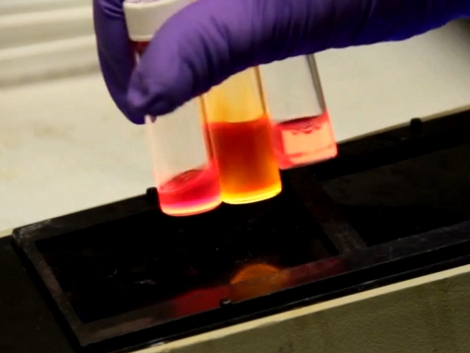
We’re taking a field trip from the backyard, garage, and basement hacking in order to look in on what research scientists are up to these days. A group from the Johns Hopkins Institute for NanoBioTechnology has been manufacturing quantum dots for use in the medical field. Made up of Cadmium Selenide, this is a nanomaterial that you can think of as individual crystals of the smallest size possible. Quantum dots have many uses. Here, [Charli Dvoracek] takes the recently manufactured dots and activates them with antibodies capable of targeting cancer cells. Once mixed with a biological sample, the dots embed themselves in the walls of the cancer, allowing the researchers to find those cells thanks to the phosphorescent properties of the dots.
The video after the breaks walks us through the various steps involved in growing these dots. [Charli] has the benefit of a fully outfitted lab, using tools like an argon-filled glove box to protect her from harmful off-gases. You’re not likely have this sort of thing in your home laboratory, but as we’ve seen before, you can make some of your own equipment, and produce interesting chemicals with simple processes. If you’re someone who already tinkers with chemistry experiments we want to hear about your exploits so please drop us a tip about what you’re up to.













